What Is the Meaning of Hades in the Bible? Realm of the Dead
In biblical context, Hades refers to the temporary abode of the dead, closely aligned with the Hebrew concept of Sheol. It serves as a holding place for souls awaiting final judgment, distinct from Gehenna, which is associated with eternal damnation.
Hades is depicted in the New Covenant, especially in Jesus’ parables, as a place of temporary torment, highlighting moral responsibility and the consequences of earthly behavior. Early Christian theology adapted these ideas, reinterpreting Hades within the framework of Christ’s resurrection.
To understand its multifaceted roles and distinctions, particularly against Sheol and Hell, further exploration is essential.
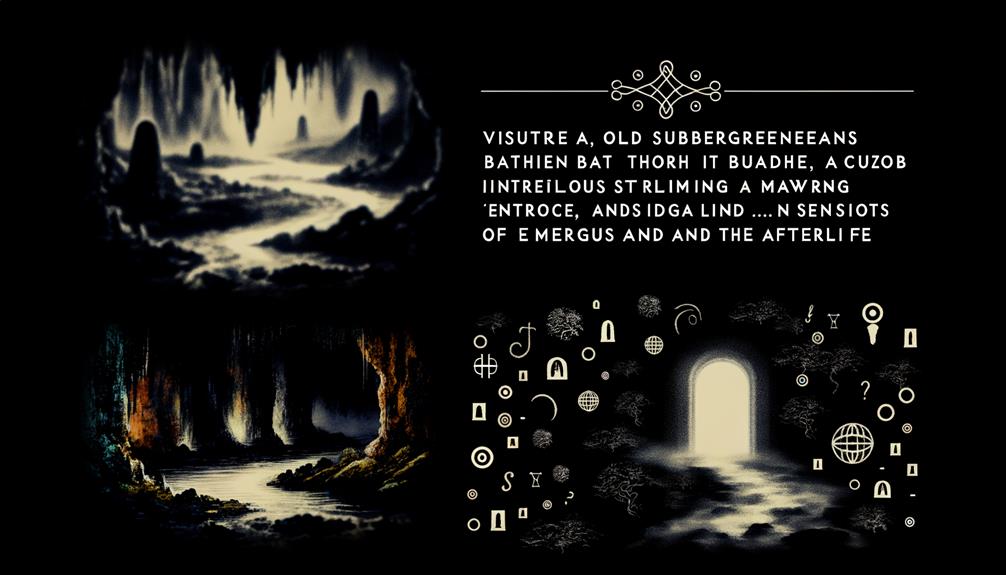
Meaning of Hades in the Bible: Origins, Symbolism, and Interpretation
| Aspect | Details |
|---|---|
| Term Origin | Greek word for the underworld or unseen realm |
| Biblical Context | Used to describe the realm of the dead |
| Old Testament Equivalent | Sheol – place of the dead, both righteous and unrighteous |
| New Testament Usage | Found in passages like Luke 16:23 and Revelation 20:13-14 |
| Symbolic Meaning | A temporary place before final judgment |
| Distinction from Hell | Hades is not the final hell (Gehenna), but a waiting place |
| Theological Implications | Highlights concepts of death, judgment, and the afterlife |
Definition of Hades
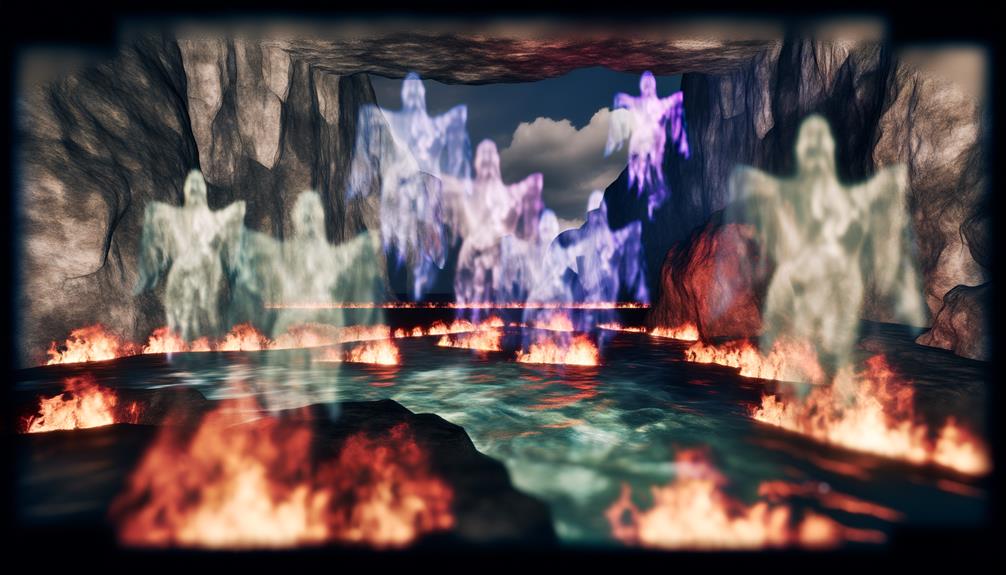
Hades, derived from the Greek word ‘ᾍδης’ (Hádēs), refers to the domain of the dead and is often understood within biblical texts as the abode of the departed spirits.
The term appears mainly in the New Covenant, where it is utilized to describe the temporary holding place for souls awaiting final judgment. Theological scholars often distinguish Hades from Gehenna, the latter being associated with eternal damnation.
Historically, Hades is equivalent to the Hebrew concept of Sheol, the underworld or grave. This notion underscores the intermediate state between death and resurrection, reflecting early Judeo-Christian eschatological beliefs.
Understanding Hades within this framework provides critical insight into biblical anthropology and soteriology, illuminating early Christian perspectives on life after death.
Hades in Greek Mythology
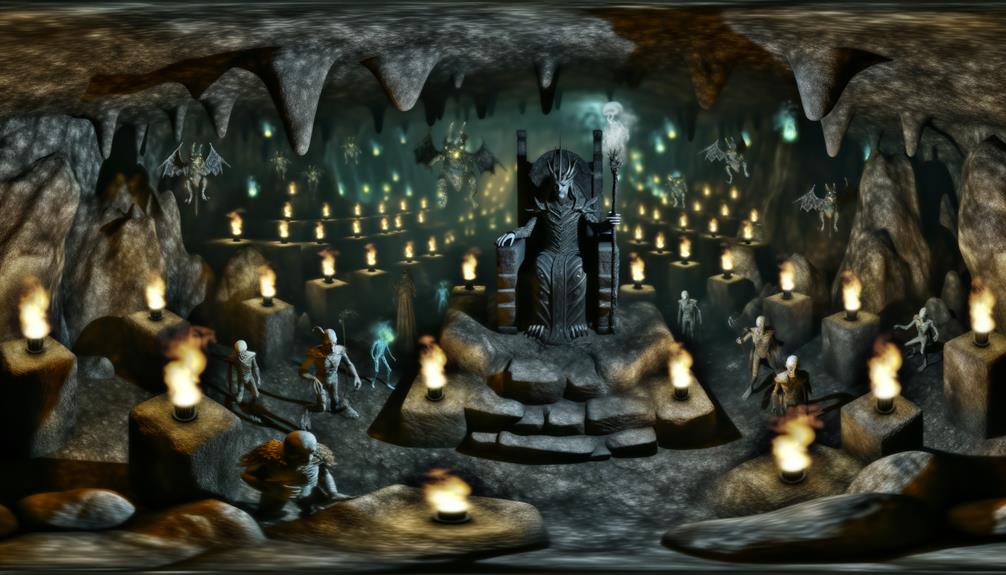
In Greek mythology, Hades is not merely a place but also the name of its divine ruler, who presides over the domain of the dead.
This underworld is intricately connected to themes of afterlife and punishment, reflecting a complex cosmology where souls are judged and assigned their eternal fates.
Understanding Hades in this scenario provides significant insight into its conceptualization and subsequent adaptations within biblical narratives.
Underworld’s Divine Ruler
As the sovereign deity presiding over the Greek underworld, Hades embodies a complex interplay of fear, reverence, and mythic symbolism that extends beyond mere death. In classical mythology, Hades is not only the ruler but also the custodian of the dead, maintaining balance and order within his domain.
Unlike other gods, his dominion is not over the living but the deceased, which imbues him with a unique form of authority.
- Symbolism: Hades represents the inevitable and often mysterious nature of death.
- Cultural Influence: His image has permeated various aspects of Greek culture and religion, influencing later religious texts and practices.
- Divine Balance: Hades holds a critical role in the divine hierarchy, ensuring that the natural order between life and death is maintained.
Afterlife and Punishment
While Hades’ role as the divine ruler of the underworld establishes him as a custodian of the dead, his domain also encompasses the multifaceted aspects of afterlife and punishment as depicted in Greek mythology.
The underworld is divided into several regions, each reflecting the moral standing of its inhabitants: the Elysian Fields for the virtuous, Asphodel Meadows for ordinary souls, and Tartarus for the condemned. This stratification underscores ancient Greek views on morality and justice, resonating deeply with theological and historical contexts.
| Region | Inhabitants | Emotional Tone |
|---|---|---|
| Elysian Fields | Virtuous Souls | Bliss and Reward |
| Asphodel Meadows | Ordinary Souls | Neutrality and Stasis |
| Tartarus | Condemned Souls | Suffering and Punishment |
This framework illustrates the nuanced perceptions of divine retribution and morality in ancient Greek belief systems.
Hades in the Old Testament
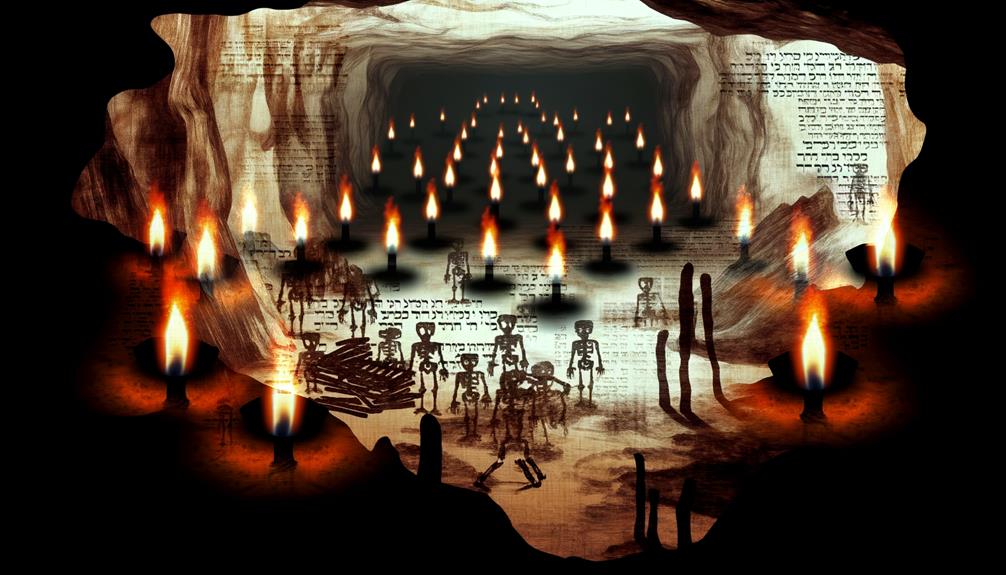
How does the concept of Hades manifest in the Old Scripture, and what theological significance does it hold within the ancient Hebrew worldview?
In the Old Covenant, the concept analogous to Hades is ‘Sheol,’ a shadowy abode of the dead. The Hebrew term Sheol represents a more neutral place of the departed, rather than a domain of punishment or reward.
The theological significance of Sheol includes:
- Universality: Sheol is depicted as the inevitable destination for all souls, regardless of moral standing.
- Ambiguity: It is described as a place of darkness and silence, with unclear delineations between reward and punishment.
These elements reflect the evolving understanding of the afterlife in the Hebrew Scriptures.
Hades in the New Testament
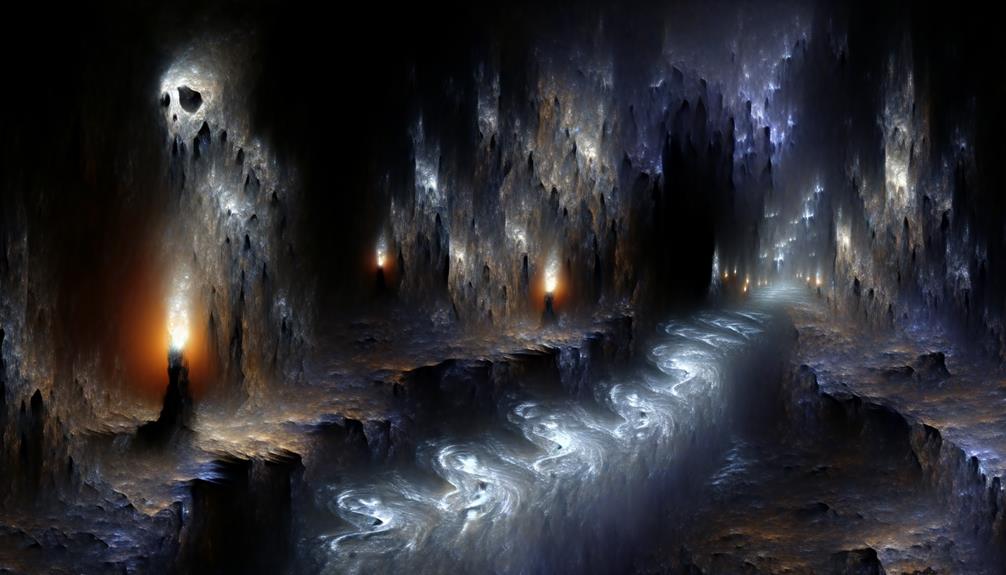
In the New Testament, Hades is referenced in the teachings of Jesus, most importantly in His parables, where it is portrayed as a place of posthumous existence.
Jesus’ depiction of Hades often serves as a contrast to the Kingdom of Heaven, highlighting themes of judgment and the afterlife.
This section will explore these references, examining how they contribute to a nuanced understanding of Hades within early Christian eschatology.
Hades and Jesus’ Teachings
Jesus’ teachings in the New Covenant frequently reference Hades to elucidate the nature of the afterlife and the consequences of moral conduct. His discussions about Hades serve as a theological framework for understanding divine judgment and eschatological destinies.
In the New Scriptures, Hades is portrayed as a temporary abode for the dead, emphasizing the interim state before the final judgment.
- Moral Responsibility: Jesus underscores the importance of ethical behavior, indicating that actions in this life affect one’s fate in the afterlife.
- Divine Justice: Hades represents a domain where divine justice is meted out, affirming the righteousness of God’s judgments.
This nuanced portrayal of Hades offers profound theological insights into early Christian eschatology.
Parables Mentioning Hades
The New Covenant parables that mention Hades provide critical insights into early Christian perspectives on the afterlife and divine retribution. Significantly, the parable of the Rich Man and Lazarus (Luke 16:19-31) elucidates Hades as a place of torment for the unrighteous. This narrative highlights themes of justice, mercy, and the irreversible nature of post-mortem destinies.
| Parable | Biblical Reference | Key Themes |
|---|---|---|
| Rich Man and Lazarus | Luke 16:19-31 | Justice, Mercy, Irreversibility |
| Weeds and Wheat | Matthew 13:24-30 | Separation of Righteous/Unrighteous |
| Wedding Banquet | Matthew 22:1-14 | Worthiness, Judgment |
| Ten Virgins | Matthew 25:1-13 | Preparedness, Vigilance |
| Talents | Matthew 25:14-30 | Stewardship, Accountability |
These parables collectively underscore the New Covenant’s emphasis on ethical living and the consequences of moral choices.
Comparing Hades and Sheol

Although often used interchangeably, Hades and Sheol possess distinct nuances and cultural contexts within biblical literature.
Sheol, primarily found in the Hebrew Bible, denotes the grave or the abode of the dead, reflecting ancient Israelite concepts of an undifferentiated afterlife. Conversely, Hades, used in the Greek New Covenant, carries more developed notions of post-mortem existence, influenced by Hellenistic ideas.
- Cultural Contexts: Sheol is rooted in Jewish tradition, while Hades integrates Greek philosophical thought.
- Theological Implications: Sheol lacks moral judgment, whereas Hades implies a degree of moral reckoning.
This comparative understanding enriches our grasp of biblical eschatology.
Hades Vs. Gehenna
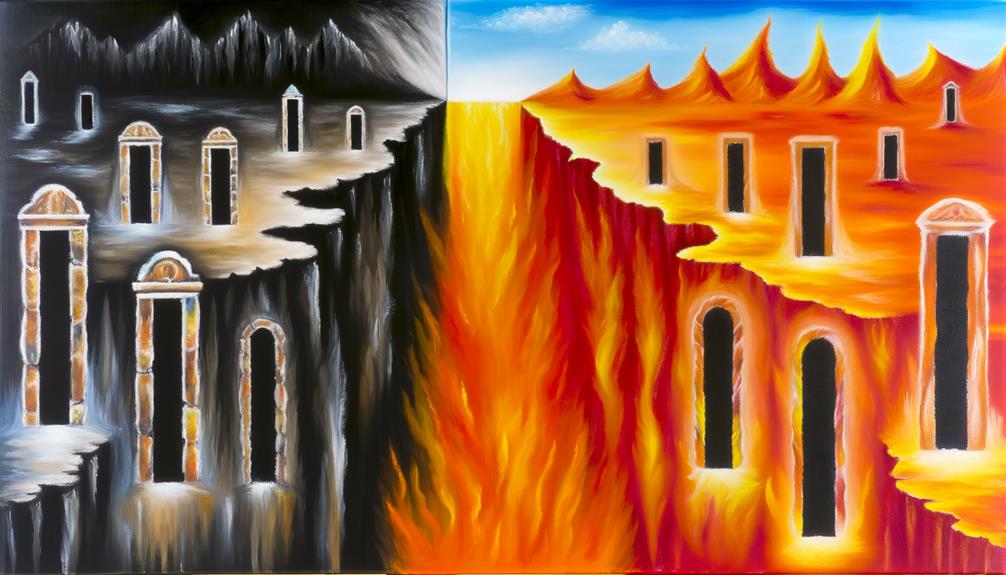
Building upon the distinctions between Hades and Sheol, it is imperative to differentiate Hades from Gehenna, another term frequently encountered in biblical discourse on the afterlife.
Hades, rooted in Greek thought and often translated as the domain of the dead, serves as a temporary holding place for souls.
In contrast, Gehenna, derived from the Hebrew ‘Ge-Hinnom’ (Valley of Hinnom), represents a site of final judgment and eternal punishment. Historically, Gehenna referred to a physical location outside Jerusalem associated with idolatry and child sacrifice (2 Kings 23:10).
Theologically, Gehenna evolved into a symbol of ultimate divine retribution.
Consequently, while Hades and Gehenna both pertain to post-mortem states, their purposes and implications in biblical literature markedly diverge.
Hades Vs. Hell
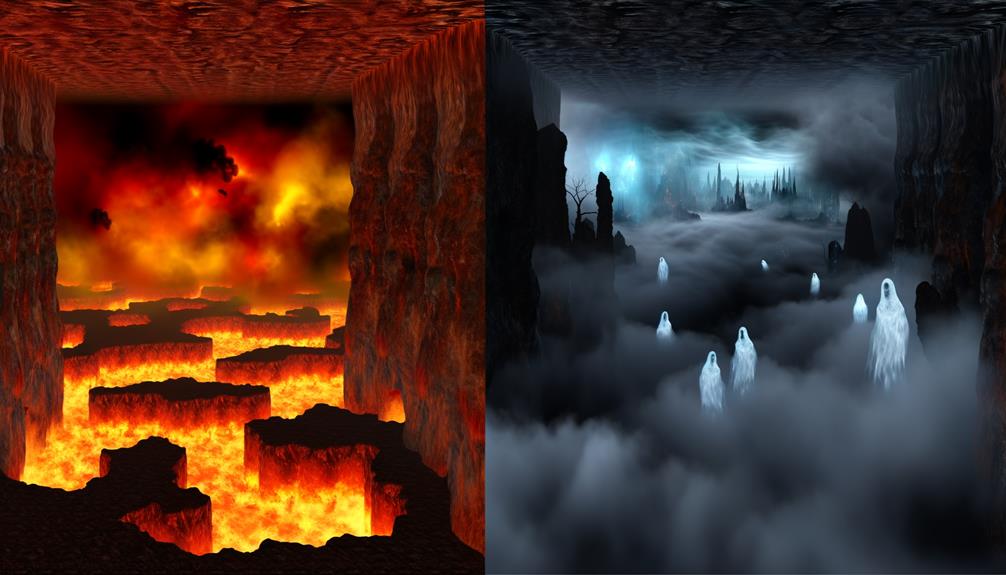
In exploring the distinctions between Hades and Hell, it is essential to recognize that Hades serves as a temporary residence for the dead, while Hell is often depicted as the final destination for the wicked in Christian eschatology.
Theological interpretations of Hades often describe it as a holding place where souls await judgment, contrasting with Hell’s portrayal as a place of eternal punishment.
- Hades: A temporary domain for souls awaiting final judgment.
- Hell: The ultimate place of eternal punishment for the wicked.
Understanding these distinctions is vital for a thorough grasp of biblical eschatology and the afterlife’s theological landscape.
Early Christian Views
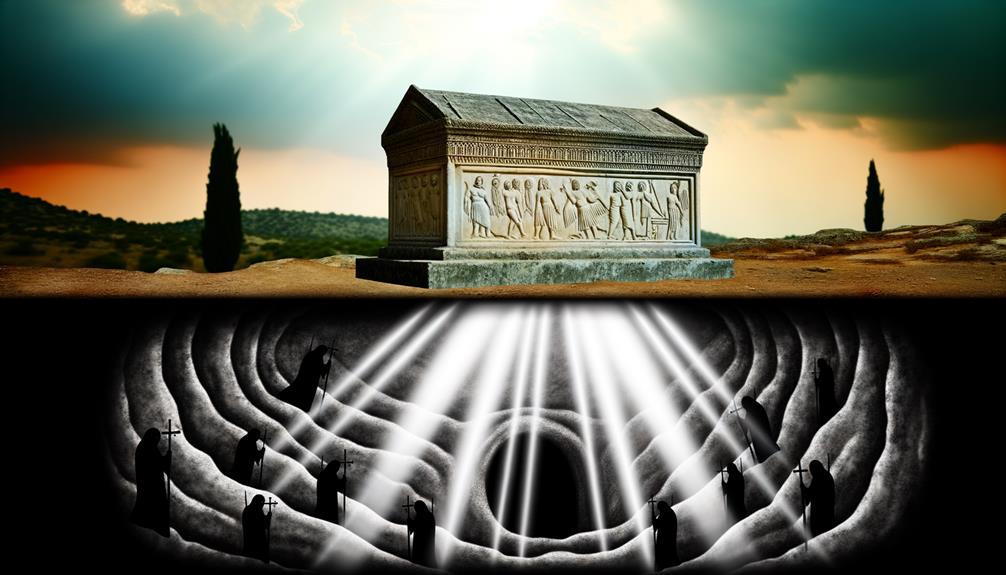
Early Christians inherited and adapted Jewish concepts of the afterlife, integrating them with emerging doctrines about Christ’s resurrection and the final judgment.
Hades, initially viewed as a shadowy interim state for the dead, underwent theological reconfiguration. The resurrection of Christ redefined the eschatological landscape, emphasizing the triumph over death and Hades (Revelation 1:18).
Early Christian writings, such as those of Paul, reflect a dualistic perspective: the righteous ascend to be with Christ, while Hades becomes associated with awaiting final judgment (1 Corinthians 15:55).
This period marked a significant evolution, as Hades shifted from a neutral abode to a more morally charged concept, setting the stage for later distinctions between Hades and Hell in Christian theology.
Jewish Perspectives

Jewish perspectives on the concept of Hades can be traced through an examination of ancient Jewish texts, which often refer to Sheol as the domain of the dead.
Rabbinic interpretations provide further insight into the distinctions and overlaps between Hades and Sheol, revealing varying theological understandings.
Comparatively analyzing Hades and Sheol illuminates the evolution of eschatological thought within Jewish tradition and its influence on early Christian conceptions.
Ancient Jewish Texts
The concept of Hades in the Bible draws particularly from ancient Jewish texts, where it is often equated with Sheol, the shadowy domain of the dead. Sheol is depicted as an underworld where both the righteous and the wicked reside after death.
These texts provide a multifaceted understanding of the afterlife, which prefigures later Christian interpretations.
- Sheol as a Universal Destination: It is described as the inevitable place for all deceased souls, irrespective of their moral standing.
- Separation from the Divine: Sheol represents a state of being cut off from the presence of God, emphasizing existential separation.
This foundational perspective underpins subsequent theological developments.
Rabbinic Interpretations
Building on the foundational concept of Sheol, rabbinic interpretations further elaborate on the nature and characteristics of the afterlife, offering a richer and more nuanced understanding within Jewish theological discourse.
The Talmud and Midrashic literature explore the moral and ethical dimensions of existence beyond death, presenting Sheol as a place of moral reckoning and spiritual purification.
Rabbinic texts often describe Sheol with varying degrees of reward and punishment, reflecting the moral actions of individuals during their earthly lives.
These interpretations emphasize divine justice and the transformative potential of the afterlife, aiming to inspire ethical living within the Jewish community.
Consequently, rabbinic thought provides a complex and dynamic portrayal of Sheol that transcends simplistic notions of an underworld.
Hades Vs. Sheol
In examining the nuanced distinctions between Hades and Sheol, Jewish perspectives reveal a profound interplay between cultural context and theological evolution.
Sheol, often referenced in Hebrew Scriptures, is traditionally understood as a shadowy abode for all the dead, irrespective of moral standing.
Conversely, Hades, influenced by Greco-Roman thought, introduces a more complex afterlife landscape, including domains of reward and punishment.
This divergence underscores significant shifts in eschatological views from ancient Israelite religion to later Jewish thought influenced by surrounding cultures.
- Sheol: A universal destination for the dead in early Hebrew texts.
- Hades: Reflects Greco-Roman beliefs, incorporating distinctions between righteous and wicked.
Contemporary Interpretations
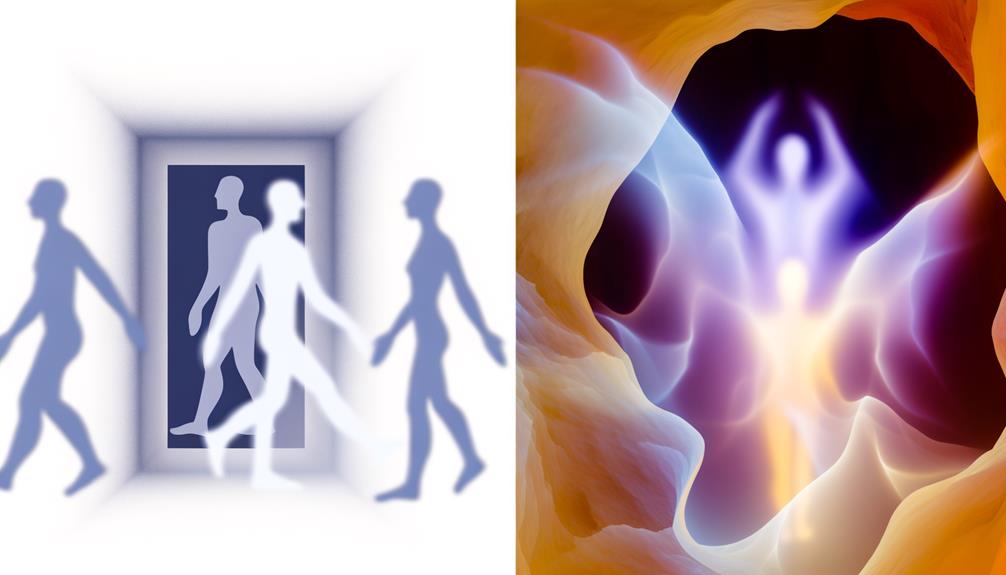
Frequently, contemporary interpretations of Hades in the Bible are influenced by a blend of theological insight, historical context, and evolving doctrinal perspectives. Scholars often juxtapose ancient Greek notions of Hades with Judeo-Christian understandings to elucidate its biblical significance.
Theologically, Hades is viewed as an intermediate state, distinct from final judgment, aligning with early Christian eschatology. Historical analysis reveals its shift from a mere abode of the dead to a nuanced domain reflecting moral distinctions.
Modern theologians also consider the implications of Hades in light of Christ’s resurrection, interpreting it as a conquered territory. Consequently, contemporary views on Hades merge scriptural exegesis, patristic writings, and ongoing scholarly discourse, enriching our understanding of its biblical role.
Conclusion
The concept of Hades in the Bible intertwines Greek mythology, Old and New scriptures references, and comparisons with Sheol and Hell.
How do these varied interpretations shape the understanding of the afterlife?
Early Christian views, Jewish perspectives, and contemporary interpretations further enrich the theological and historical context.
Ultimately, the multifaceted nature of Hades reflects a complex tapestry of beliefs about death and the hereafter, inviting ongoing scholarly exploration and theological reflection.






